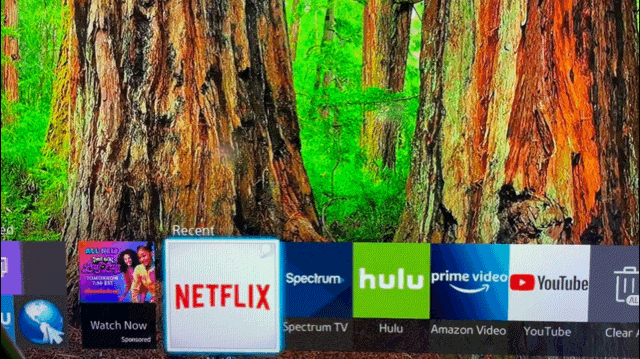In recent years, the landscape of advertising has undergone a significant transformation. One of the most notable changes is the rise of streaming advertising. With the proliferation of streaming platforms and the decline of traditional cable TV, advertisers are increasingly turning to streaming services to reach their target audiences. This shift is driven by the growing popularity of on-demand content and the unique advantages that streaming advertising offers. In this blog post, we will explore the rise and strength of streaming advertising, backed by compelling statistics and insights.

The Growth of Streaming Platforms
Streaming platforms have seen explosive growth in the past decade. Services like Netflix, Hulu, Amazon Prime Video, Disney+, and a myriad of others have revolutionized how people consume media. According to a report by the Motion Picture Association, global subscriptions to online video services surpassed 1.1 billion in 2020, an increase of 26% from the previous year. This trend shows no signs of slowing down, with eMarketer projecting that over 82% of U.S. households will have at least one streaming service by 2024.
The Shift in Advertising Spend
As audiences migrate from traditional TV to streaming platforms, advertisers are following suit. In 2020, streaming ad spend in the U.S. reached $14.44 billion, a significant increase from $10.59 billion in 2019. This upward trajectory is expected to continue, with streaming ad spend projected to surpass $20 billion by 2024. This shift is largely driven by the ability of streaming platforms to offer more targeted and personalized advertising compared to traditional TV.
The Strength of Streaming Advertising
Streaming advertising offers several distinct advantages that make it an attractive option for marketers:
- Targeted Advertising: Streaming platforms leverage vast amounts of user data to deliver highly targeted ads. This means that advertisers can reach specific demographics, interests, and behaviors, leading to more effective and efficient ad campaigns.
- Engaged Audiences: Viewers of streaming content are often more engaged than traditional TV audiences. They choose what to watch and when, leading to higher attention levels during ad breaks. According to a study by Nielsen, streaming ads have an average viewability rate of 84%, significantly higher than the 68% for traditional TV ads.
- Measurable Results: Streaming platforms provide detailed analytics and performance metrics, allowing advertisers to track the success of their campaigns in real-time. This transparency helps in optimizing ad strategies and improving ROI.
- Creative Flexibility: Streaming advertising allows for more creative formats, including interactive ads, shoppable ads, and personalized video content. This flexibility enables brands to create more engaging and memorable ad experiences.
- Cross-Device Reach: With viewers consuming content on various devices—smart TVs, smartphones, tablets, and computers—streaming advertising ensures that brands can reach their audience across multiple touchpoints.
Case Studies and Success Stories
Numerous brands have successfully harnessed the power of streaming advertising to achieve impressive results. For instance, Hulu’s ad-supported model has attracted over 41.6 million subscribers, providing brands with a massive audience. PepsiCo utilized Hulu’s interactive ad features to launch a campaign for its new product, generating a 28% lift in purchase intent.
Another example is Disney+, which launched an ad-supported tier in 2022. This move not only attracted new subscribers but also provided advertisers with access to Disney’s rich content library and highly engaged audience. As a result, Disney+ quickly became a sought-after platform for premium advertising.
The Future of Streaming Advertising
The future of streaming advertising looks promising, with several trends poised to shape the industry:
- Increased Personalization: Advances in AI and machine learning will enable even more precise ad targeting and personalization, enhancing the relevance and impact of ads.
- Interactive and Immersive Ads: As technology evolves, we can expect to see more interactive and immersive ad formats, such as augmented reality (AR) and virtual reality (VR) ads, creating more engaging experiences for viewers.
- Ad-Supported Models: More streaming platforms are likely to adopt ad-supported models, providing advertisers with additional opportunities to reach audiences. According to Deloitte, 47% of consumers in the U.S. are open to watching ads in exchange for lower subscription costs.
- Cross-Platform Integration: Integration of ads across different streaming platforms and devices will become more seamless, allowing for cohesive and consistent ad experiences.
The rise of streaming advertising is a testament to the evolving media consumption habits of today’s audiences. With its ability to deliver targeted, engaging, and measurable ads, streaming advertising has become a powerful tool for marketers. As streaming platforms continue to grow and innovate, the strength of streaming advertising will only increase, offering brands new and exciting ways to connect with their audiences.
For businesses looking to stay ahead in the digital advertising game, embracing streaming advertising is not just an option—it’s a necessity. By leveraging the unique advantages of streaming platforms, brands can create impactful campaigns that resonate with their target audiences and drive meaningful results.
By understanding the rise and strength of streaming advertising, marketers can better navigate the shifting landscape and capitalize on the opportunities it presents. For more insights and strategies on digital advertising, reach out to Thumbvista today.

